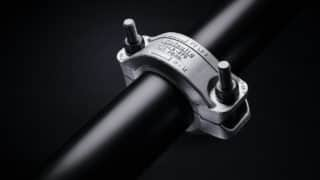
Posted on June 6, 2017
There are (3) pillars that engineers can use to ensure their next data center’s piping system design is mission critical ready. This philosophy, of the three pillars originated in the submarine program, but most engineers would agree these pillars comprise the foundation of any mission critical solution. The pillars parallel Victaulic’s philosophy on grooved piping solutions, and reveal limitations in weld/flange solutions.
Below you will find a brief overview of those pillars, but if you happen to be in Orlando for 7×24 Exchange’s Spring Conference coming up in mid-June, our very own Don Mitchell and Larry Thau will be speaking on this topic at the conference. Or if you prefer to get your questions answered now, you can reach our team of experts by emailing them at [email protected].
The following summary includes excerpts from Don’s article on the three pillars which appeared in 7×24 Exchange’s 2017 spring edition of their magazine.
Holistic Engineered Design Practices – All components designed and certified for performance as a system in support of the application. Minimal use of non-replicable design practices, maximum use of pretested components and systems.
“The holistic engineering evaluation of mission critical pipe systems looks beyond individual components to the overall pipe system performance. It’s not just about welded joints versus grooved mechanical couplings, it’s about how the entirety of the system performs once all of the pipe is joined, the components are installed and the system is operating.
“Unlike a welded system, where joints are rigid, a grooved mechanical piping system can employ rigid and flexible mechanical couplings when and where needed…Whether it’s accommodating thermal movement, seismic movement, or system noise and vibration mitigation, in a welded system, movement requires specialty devices… An alternative option would be to design the systems with grooved mechanical piping.”
Vertically Integrated Quality Control – Certification and traceability of both materials and component construction is fundamental to any mission critical application.
“The requirement of quality inspection and traceability of both materials and fabrication is essential to ensure the performance of welded joints and grooved mechanical piping joints. Even the best welds have defects, the primary question is the severity of the defects…Typically a sampling radiography inspection of 10% to 20% of joints is mandated for these welded applications. That leaves 80-90% of system welds unchecked. For a manufactured grooved mechanical pipe coupling, the quality control is no less important, but it is easier to verify. All grooved mechanical couplings should be certified and traceable from location and date of production by the manufacturer…It is essential to verify (product) testing with the coupling manufacturer, since not all hardware meets mission critical criteria as a system.”
Proper installation and Verification – The leading risk factor in any piping system is improper installation. In the case of a weld, radiography is typically required to guarantee proper joint installation.
“From an installation standpoint, grooved mechanical couplings are quick and easy to install, but if they aren’t installed correctly, the challenges are the same as with a bad weld…In recent years, the development of intelligent grooving machines has provided additional confidence and has further reduced the already minimal chance for installation error… Additionally, some manufacturers now offer inspection services and performance guarantees…”



